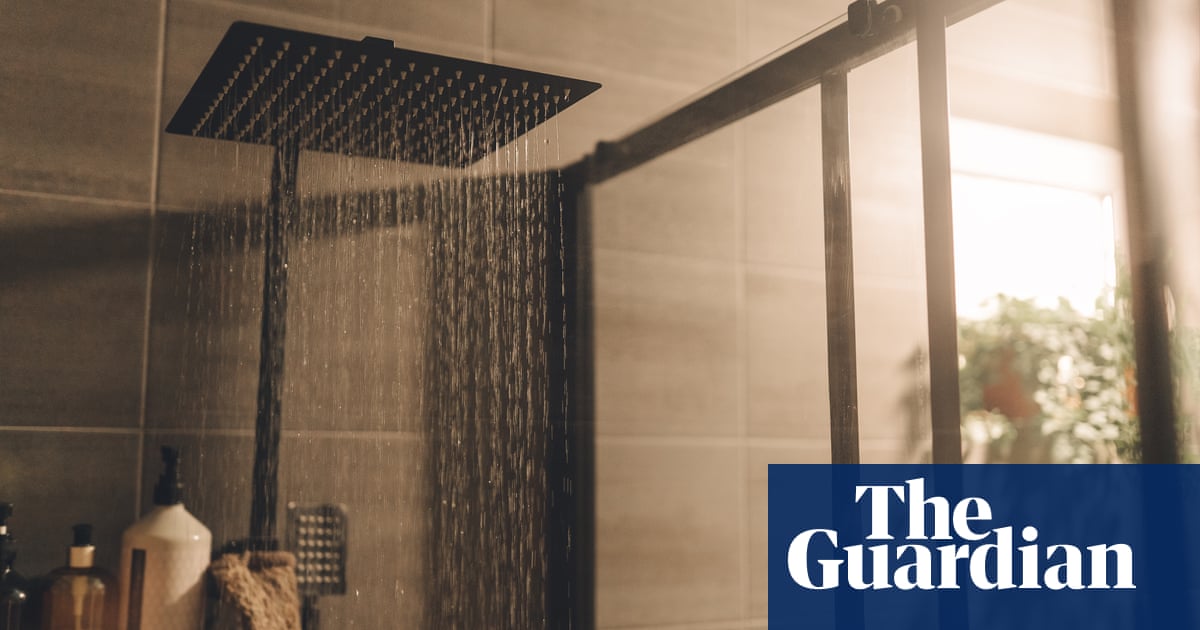A long shower at the end of the day might be a relaxing escape from reality, but there is a reason to stay alert. Energy efficiency experts say the way Australian bathrooms are being built will drain your wallet – and the environment.
Alan Pears, a senior industry fellow at RMIT who helped develop Australia’s appliance energy star ratings, describes showers as “almost perfectly designed to waste energy and make you feel uncomfortable”. He says bathrooms lack “basic design principles” and are often cold and poorly ventilated, which exacerbates hot water use.
When cold air enters shower cubicles, hot air rises, he says, resulting in a “slightly hotter top half, making you feel even colder because your legs are freezing”.
Under changes to the national construction code introduced in 2022, exhaust fans will be required to continue to run for 10 minutes after the lights are turned off, in order to ensure moisture and odours are removed after a person leaves the room. Though some states are yet to introduce the changes, they should all be in line by next year.
The amendment was introduced to reduce condensation buildup and its associated risks, like mould, in bathrooms, affecting major renovations and new builds. But the requirement will make bathrooms colder and therefore increase hot water use, particularly if exhaust fans are located near the tops of shower cubicles, Pears says.
Tim Forcey, an energy efficiency adviser and author, says “there’s nothing less comfortable than having to have a shower in a big open space on a cold winter morning”. The solution, he says, is to better contain heat in shower cubicles.
Showerdomes, a New Zealand invention, are essentially a lid placed on top of a shower. They eliminate the need for additional heating or cooling of a bathroom by preventing warm air from being sucked up into the ceiling exhaust fan and into the roof.
Forcey, who has one in his home in Melbourne’s Bayside, says with a dome “you’re warm in a split second”. They cost about $300, provided you install it yourself.
Showerdome converts are effusive in their praise, but some users say the devices make their bathroom “feel like a sauna”.
Though Forcey says a Showerdome – or something similar to it, made of Corflute – could negate the need for bathroom exhaust fans, Gary Rake, the CEO of the Australian Buildings Code Board, says it would not be enough to waive the requirements.
Instead, an assessment could be sought to determine whether or not the Showerdome satisfies ventilation requirements.
According to Pears, problems relating to excess moisture, such as the growth of mould and mildew, have escalated over the last 20 years due to houses being less “leaky”.
To cut energy use and save money, Forcey and Pears advise against heated towel rails, ducted heating and heated floors. They recommend using a more energy-efficient radiator to heat bathrooms when needed and for shower walls to be built with thinner insulating material (instead of glass) to ensure walls warm up faster.
after newsletter promotion
Pears attributes poor bathroom design to building codes which focus on water temperatures instead of preventing cool air from entering shower cubicles. He says this is due to an Australian culture of “regulations that cover the bare minimum”.
For instance, there is no requirement that showers have a properly sealed door – or a door at all – which would prevent cold air from mixing with hot air and producing steam.
In the process of attempting to solve problems, some solutions have created some of their own. Prompted by the need to reduce water use during droughts, the mandatory shift to energy-efficient shower heads has incidentally led people to increase their energy consumption.
More energy-efficient shower heads release less hot water a minute, producing less heat, which Pears says prompts people to shower at higher temperatures.
According to researchers from Monash University, those who used five-star rated shower heads increased their shower temperatures by one to two degrees. The authors wrote in the Conversation that “shower head manufacturers … aren’t promoting efficient shower heads because they don’t respond to demand”.
“A lot of people in the building industry are opposed to making buildings work better … [seeing changes] as an extra cost on the homebuyer and more complications for the builder to have to meet,” Pears says.
He also criticises the siloed nature of government, which he says is ineffective in improving housing, which requires a multifaceted effort.
“Upgrading housing is about social justice, it’s about health care, it’s about saving carbon emissions,” he says.


